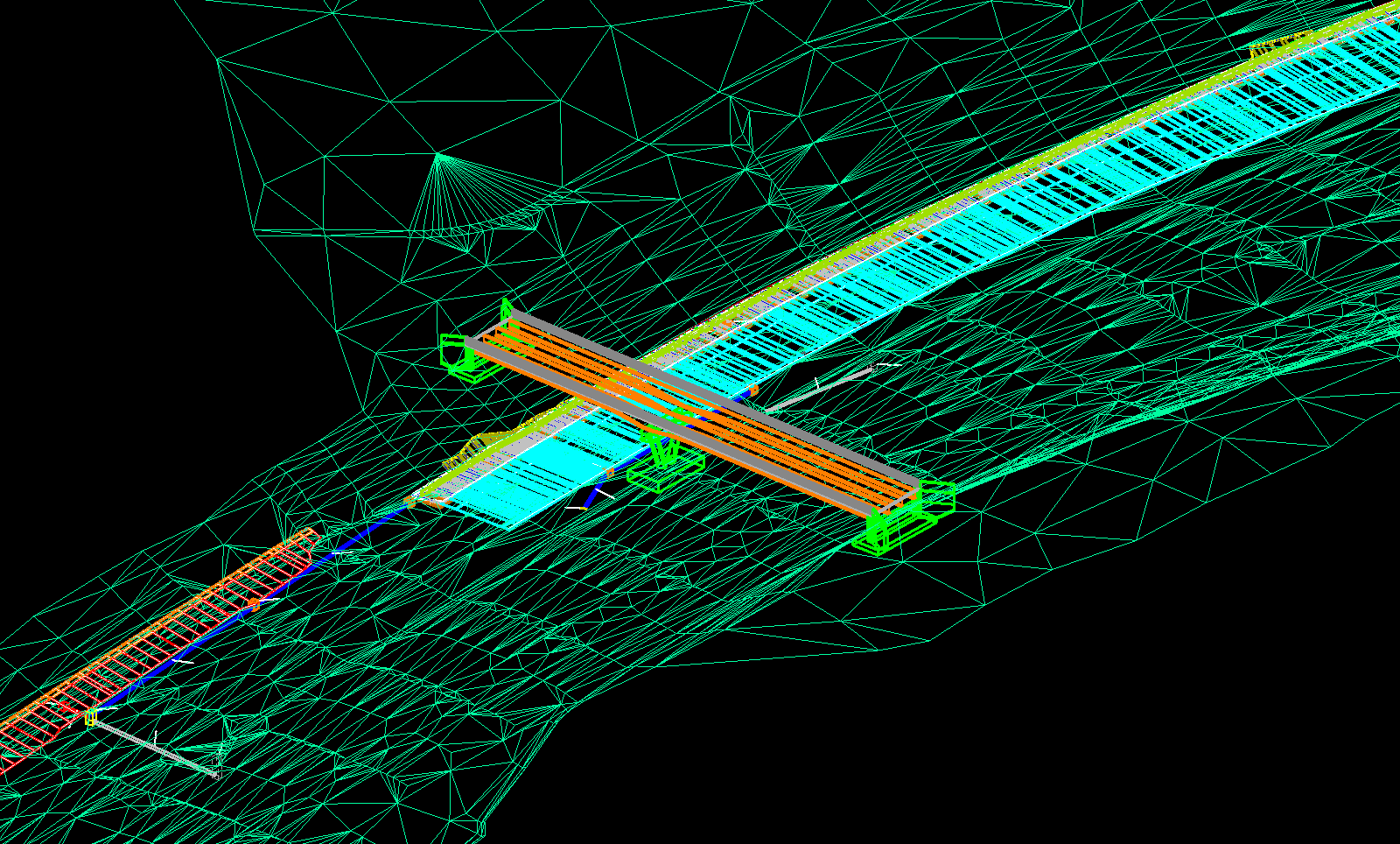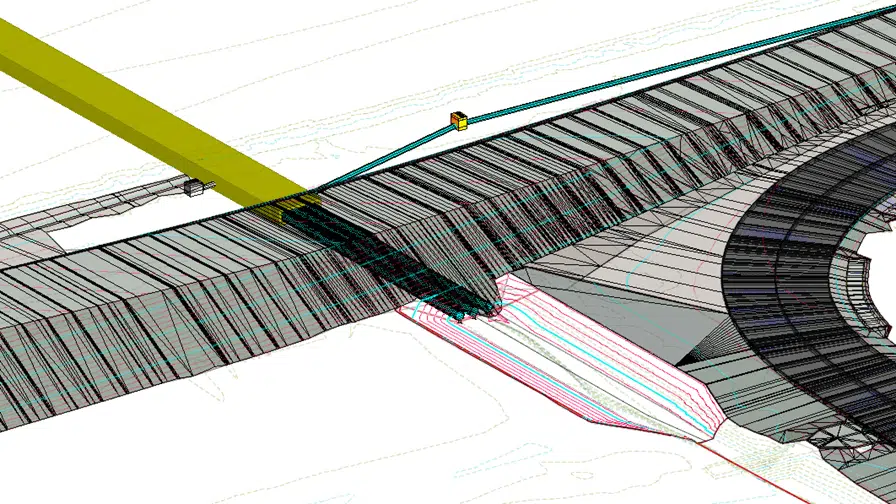- July 19, 2023
- Perspectives, Trending Topics
FAQs for State DOTs Considering Digital Delivery


Nicole Williams, PE
Practice Lead, Digital Delivery
State DOTs are constantly seeking better ways to optimize project benefits, encourage innovation, and improve quality while still reducing delivery time, cost, and risk. Digital delivery and construction—when fully implemented—help owners meet these program objectives and offer a streamlined approach to design, construction, and asset management.
On the surface, digital delivery appears simple: the transition from paper or PDF design deliverables to electronic files. However, digital delivery goes beyond file type transitions to precisely recast paper designs into model-based designs, or Model as a Legal Document (MALD). More importantly, it also involves technological and organizational transformation for state agencies and changes in design and construction industry approaches.
While there are still challenges to digital delivery’s implementation, it presents the best avenue to boost project efficiency and reliability. This FAQ explains how transportation planners, designers, contractors, and the public can all benefit from digital delivery transformation.
How can digital delivery and digital twins benefit DOTs?
When utilizing digital delivery methods, DOTs receive more accurate and detailed designs that reduce design conflicts, errors, and risk. Additionally, designers can convey their design in a more digestible way to the consumer by leveraging enhanced communication and collaboration formats for project stakeholders. Digital twins, defined as a virtual model of a physical object, let DOTs monitor the condition and performance of their assets in real-time, identify potential issues before they become major problems, and optimize maintenance and repair schedules.
Together, digital delivery and digital twins help state DOTs build and maintain safer, more efficient, and more sustainable transportation systems. Agencies save time and money by identifying potential issues early in the design process, improving project delivery, and reducing costly change orders and rework. Digital delivery and digital twins also enhance the reliability of infrastructure assets.
What are the benefits during the design phase?
Digital delivery supercharges collaboration and integration among designers, contractors, owners, and other project stakeholders who provide input during design. All project elements can be seen together, allowing details and conflicts to be easily understood and leading to a more constructible design. Digital delivery also helps increase cost estimate accuracy because of how design information natively becomes better organized, more accessible, and in some cases, automated.
With digital delivery, reviewers are rid of the typical and often challenging cross-walking between horizontal and vertical, notes and details, and the myriad of disciplines. Instead, reviewers can manipulate the digital models to display the elements and data attributes pertinent to their end use of the model, allowing them to understand and identify potential conflicts or challenges. Reviewers can then take advantage of opportunities for innovation, scheduling efficiencies, and cost-saving measures.
What are the benefits during the construction phase?
To start, contractors gain more accurate and reliable quantities which assist in risk minimization, avoidance and reduction of change orders and cost overruns, and more reliable pricing and construction execution. During the bidding phase, digital delivery models offer contractors unparalleled insight needed to prepare more accurate, competitive, and potentially lower bids. As owners evaluate bids, the models serve as a resource in evaluating pricing and risk allocation.
Post-award, digital delivery models offer contractors much more clarity on existing conditions and the project’s design. Contractors can also utilize automated machine guidance, which results in more accurate grading and can support reliable project execution.
When questions and issues arise during construction, the digital model is a powerful tool for timely collaboration between the owner, contractor, and designer to identify optimal resolutions, minimize schedule elongation, and limit cost growth. As resolutions or clarifications are issued, they are seamlessly delivered digitally to the contractor’s team, ensuring that the contractor and owner have the most up-to-date plans at all times.
How do I get started with digital delivery?
Rome wasn’t built in one day, and you shouldn’t expect to fully transition your program to digital delivery in one day either. You can take small steps towards digital delivery, and we recommend a gradual approach to increase user adoption.
First, you can require a 3D model to be developed with each project to provide a more complete model with cohesive 3D breaklines. The breaklines should be released as a “for information only” deliverable to the contractor, who can then use the model as they see fit without being held to it contractually. Second, you can include the model as a contractual document alongside the paper plans. After reaching success in the first two steps, you can fully transition to the model as the legal document with no paper plans.
All of these steps include incremental goals to make sure you aren’t taking too big of a leap for the industry to keep up with. The other thing you can do is start small with simple digital delivery projects. As you have success, you can move on to increasingly more complex ones.

How will contractors support this change?
When the Utah Department of Transportation first introduced digital delivery, many contractors’ first response was that they would retire if digital became the norm. However, after using it in Utah and beyond, many contractors, designers, and owners see the benefits of digital delivery and want to continue progressing towards more widespread implementation.
Getting the contracting community on board and ready didn’t happen by accident. We were intentional and conducted training sessions and over-the-shoulder reviews to familiarize contractors with the new technology and deliverables. Throughout, we had open and clear lines of communication and offered continual support and technical assistance.
During projects, we solicited regular feedback and scheduled sessions to unlock more value from digital delivery to fine-tune deliverables. We also leveraged the collective wisdom and points of view of the design team, owner, and contracting community to quickly identify and address issues, ultimately resolving challenging situations before they became problematic.
While it seems trivial at first, we quickly discovered a critical detail that saved weeks during the bidding process: standard file names and conventions enable communication between designers and contractors. We sent contractors 200 files for the first phase of a project—but without the context, they didn’t have the natural benefit of knowing how the files related. Realizing this, we renamed files with multiple categories of information in each file name. We then created a spreadsheet showing file names, descriptions, metadata, and more, allowing contractors to organize the information to best meet their teams’ needs.
How does digital delivery improve collaboration?
Digital delivery brings a multidisciplinary approach that aligns engineers, designers, geographic information system professionals, data scientists, the contracting community, transportation agency staff, and public stakeholders.
Project teams use a pre-built workspace, which brings familiarity, efficiency, consistency, and accuracy. Digital delivery eliminates countless hours of guesswork and keeps teams from creating new solutions with each project. It helps everyone collaborate with the same process, tools, deliverables, education, and understanding at every phase of the project.
For example, a digital twin provides the most accurate subsurface element modeling for utility mapping and detection. Anyone can easily update 3D models of underground utilities when they learn new pipe diameters or visually confirm pipe locations. Contractors then feel more comfortable with the design because of earlier clash detection, and the reduced risk lowers their cost and builds trust with designers.
This all sounds good. So, what’s the catch?
The benefits of fully adopting digital delivery are undoubtedly worth the investment of time, resources, and energy for owners, the design community, and contractors. The catch: getting to a fully functional digital delivery environment that works for everyone isn’t as simple as changing software, developing a workspace, issuing a new standard, or writing a plan. It takes a commitment to a collaborative process that may come with points of tension that turn into opportunities for innovation.
What resources are available for DOTs to learn more?
UDOT set the digital delivery standard among state DOTs, and its guidelines became the foundation for other agencies. The UDOT Digital Delivery website publishes guidelines, tips and tricks, templates, and specialty training videos on key topics, including:
- Workspace modification
- 3D breaklines
- Asset management
- Display rules
- Driveway modeling
- Parametric labels for vertical offsets
- Component and feature name overrides
- Modeling for contractor software translation compatibility
- Surface templates
These resources can help DOTs accelerate their transition to digital delivery, overcome their hesitations, and start their journeys to more efficient and effective projects.
Contact us to learn more about how Kimley-Horn can help you transition to digital delivery.
About the Author

Nicole Williams, PE
Nicole Williams is a civil engineer with more than 15 years of experience in transportation design. She is one of the firm’s roadway practice leaders and a key partner with UDOT, TxDOT, and other states and localities. She is also a national leader in digital delivery and digital twins—from strategic planning to agency implementation to piloting and full-scale use. Nicole’s expertise comes from more than eight years as UDOT’s consultant, when UDOT pioneered the full migration into a digital delivery, construction, and twin environment. She helped with their strategic plan, organizational change management, process changes, training, industry outreach, workspace and technology development and adoption, grant funding, piloting, educational materials development, peer exchanges, and more. She has continued to help many other states as an advisor through ongoing peer exchanges and presentations. Nicole has supported other states’ strategic plans and is currently leading what will be the nation’s largest digital delivery program effort for TxDOT.
